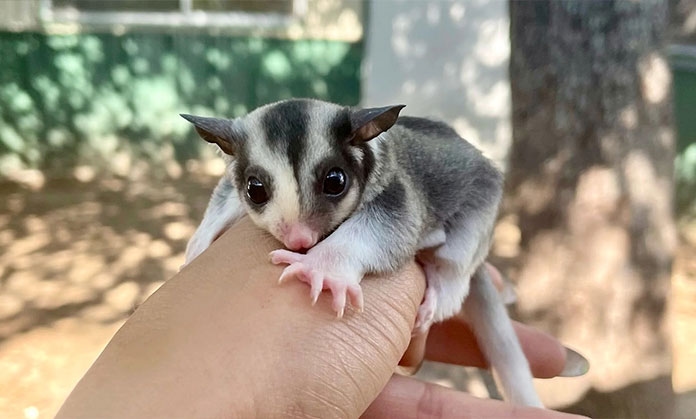
Keeping exotic pets has become increasingly popular, and one of the most fascinating choices is the sugar glider. These small, nocturnal marsupials are known for their adorable looks, playful nature, and ability to glide through the air. If you are considering a sugar glider as pets, it’s important to understand their care needs, habitat requirements, costs, and lifespan before bringing one home.
What Are Sugar Gliders?
Sugar gliders are small marsupials native to Australia, Indonesia, and Papua New Guinea. They get their name from their love of sweet foods and their ability to glide from tree to tree using a thin membrane between their arms and legs. When kept as pets, they can form strong bonds with their owners but also require consistent attention and care.
Why People Choose Sugar Glider as Pets
Many pet enthusiasts choose sugar gliders because they are unique and social animals. Unlike common pets like cats or dogs, sugar gliders are exotic and attract curiosity. They are playful, love climbing, and can be very affectionate with proper bonding. However, potential owners should know that they are nocturnal, which means they are most active at night.
Cage Setup and Habitat
One of the most important aspects of owning a sugar glider as pets is providing the right environment. They need a spacious vertical cage where they can climb and glide. A tall cage with branches, ropes, and safe toys is ideal. Since sugar gliders are very active, the more space you provide, the happier and healthier they will be.
The cage should also include a safe sleeping pouch, as they love to curl up and rest during the day. Cleanliness is essential to prevent odors and health problems, so regular cage maintenance is a must.
Diet and Nutrition
Sugar gliders need a balanced diet that includes fresh fruits, vegetables, and a protein source. Their natural diet in the wild includes nectar and insects, so replicating that with a mix of fruits, specialized pellets, and occasional live insects can keep them healthy. Avoid feeding them processed or sugary human foods, as this can harm their digestive system.
Cost of Owning a Sugar Glider
Before getting a sugar glider as pets, it’s important to consider the cost. The initial purchase can range between $200 to $500 depending on the breeder. Beyond that, you’ll need a proper cage, toys, food, and veterinary care. On average, setting up and maintaining their habitat can be more expensive than common pets.
Lifespan and Long-Term Commitment
Sugar gliders can live up to 10–15 years in captivity with proper care. This makes them a long-term responsibility. They require daily interaction and bonding time to remain happy and tame. If left alone for too long, they can become stressed and depressed. For this reason, many experts recommend keeping them in pairs so they don’t get lonely.
Are Sugar Gliders Right for You?
Owning a sugar glider as pets can be rewarding, but it’s not for everyone. They require time, attention, and specialized care. If you’re looking for an exotic pet that’s affectionate, social, and full of personality, sugar gliders may be a perfect fit. However, be prepared for the challenges that come with caring for a nocturnal animal that has unique dietary and environmental needs.
Final Thoughts
Sugar gliders are more than just cute little animals; they are intelligent, social, and long-living companions. By understanding their care, cage setup, diet, cost, and lifespan, you can decide whether they are the right pet for you. Owning a sugar glider as pets can be a rewarding experience, but it comes with responsibility and commitment.
